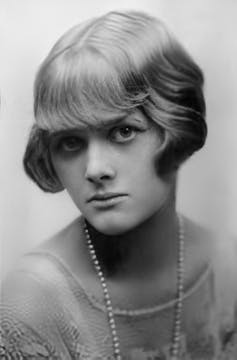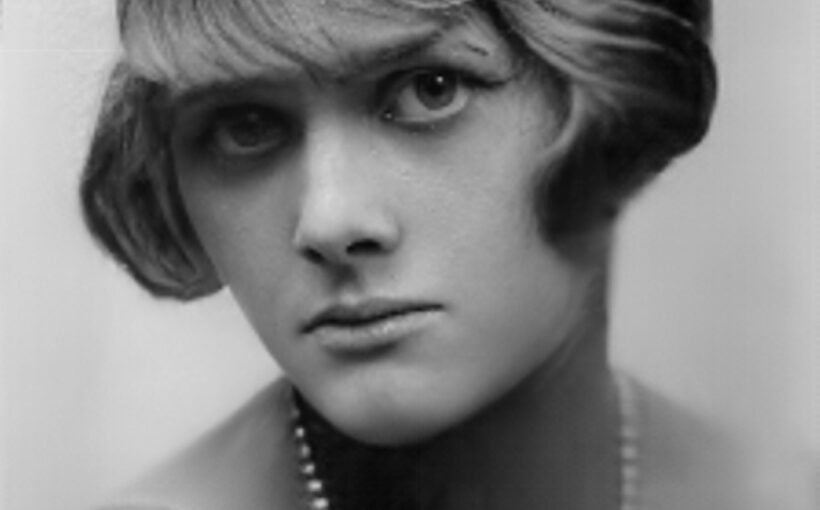In Daphne du Maurier’s short story, The Birds (1952), a change in bird behaviour is linked to the impact of technological developments after the second world war.
Birds, as the 2022 State of the World’s Birds report warns, are “barometers for planetary health”. Nearly half of global bird species are now in decline. In du Maurier’s apocalyptic tale, set in Cornwall, birds launch vicious and unprovoked attacks on humans.
Alfred Hitchcock’s adaptation, The Birds, celebrates its 60th anniversary in 2023. Revisiting du Maurier’s story of relentless devastation shows how the writer anticipated some of today’s most pressing environmental concerns.
In her 1989 memoir, Enchanted Cornwall, du Maurier claims that she was inspired by seeing a tractor ploughing a field in Cornwall surrounded by circling “cloud of screaming gulls”.
This scene is transplanted into The Birds when its narrator, disabled second world war veteran and land worker Nat Hocken, observes some unusual behaviour: “As the tractor traced its path up and down the hills … the man upon it would be lost momentarily in the great cloud of wheeling, crying birds.”
Nat acknowledges that birds always followed the plough in autumn: “but not in great flocks like these, nor with such clamour”. The tractor – and the birds’ engagement with it – is significant, as the vehicle is synonymous with mechanisation and changes in the landscape.
In his book Something New Under the Sun, historian J.R. McNeill explains that agricultural ecology changed from the 1950s, with the creation of large fields and elimination of hedgerows in order to facilitate industrial farming. This created a situation in which animal “chances for survival and reproduction were apportioned largely according to compatibility with human action”.
In du Maurier’s story, the birds turn this on its head – quite literally – through their attacks. The unnamed tractor driver tells Nat: “I could scarcely see what I was doing.” As the birds attack the eyes, sight becomes a metaphor for humans failing to see the changes in nature.

Nat, by contrast, eschews technology in favour of traditional methods (he fixes hedgerows and works with a hoe) and quickly realises that the farm owner’s attempt to shoot the birds is futile.
Like many environmental campaigners, Nat is ignored. His attentiveness to the birds’ rhythms and his traditional modes of working are perceived as strange.
The aptly named Farmer Trigg is found dead with his gun, as the birds mimic wartime aerial strategies to overcome modern technologies of war and agriculture. The point is underlined when an RAF fighter plane is later found in the field in which the tractor was ploughing, brought down by birds.
Du Maurier observed a world in which humans were becoming increasingly disassociated from their environment.
This is shown through her sensitivity to nature’s delicate balance and attentiveness to changing technology and society (the council houses of Nat’s neighbours cannot withstand the birds’ assaults whereas his old cottage, with its thick walls, provides more security).
The story unremittingly portrays how the social and economic infrastructures we take for granted are fragile and, ultimately, unsustainable.
‘All them birds’
The Birds was published a decade before conservationist Rachel Carson’s Silent Spring (1962), a pioneering book which highlighted the adverse biological effects of pesticides in American farming.
Carson drew on the Romantic poet John Keats’s La Belle Dame Sans Merci, set in a wasteland where “The sedge has withered from the lake, / And no birds sing”, as one of its epigraphs, signalling the value of literature in the articulation of environmental crisis.
Carson’s scientific text opens with an apocalyptic vision of a:
Spring without voices. On the mornings that had once throbbed with the dawn chorus of robins, catbirds, doves, jays, wrens, and scores of other bird voices, there was now no sound; only silence lay over the fields and woods and marsh.
The birds are either dying or dead, their plight – both actual and symbolic – indicative of wider environmental damage. Similarly, in The Birds, winter appears overnight and the ground becomes instantly hardened.
Carson pioneered an understanding of human biological destruction of nature through her scientific book. Du Maurier articulates the dangers through fiction.
In The Birds, du Maurier demonstrates how war – particularly war of the scale that she had witnessed as a civilian – is a destroyer and at the same time a mobiliser of the technologies of mechanisation and chemistry which have wreaked, and continue to wreak, havoc on the planet.
The Birds is a pessimistic story. Nat’s attempt to warn London of the impeding danger from the birds fails as the woman on the telephone exchange is “laconic, weary” and “impatient”, leaving Nat to observe:
She doesn’t care … She hopes to go to the pictures tonight. She’ll squeeze some fellow’s hand, and point up at the sky, and say ‘Look at all them birds!’
Read today, Nat’s comment feels like an ironic observation on the Hollywood interpretations of du Maurier’s story, which obscured her original narrative. Modern readers need to “look” at du Maurier’s The Birds more closely to see that “something in nature has turned against us”.
In du Maurier’s thriller of altered nature, birds become the violent emissaries of death. She terrorised contemporary readers with a vision of the future, which is now very close to the present.
![]()
Catherine Wynne does not work for, consult, own shares in or receive funding from any company or organisation that would benefit from this article, and has disclosed no relevant affiliations beyond their academic appointment.



